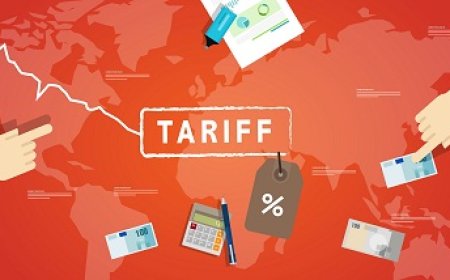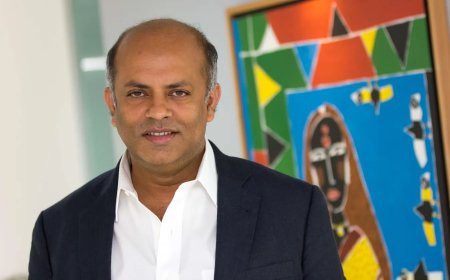We Need a National Artificial Intelligence Policy
We are already behind, but it is not too late and it need not continue to be that way. AI can help Bangladesh take a quantum leap into the future.

We are late. While our trading partners wire artificial intelligence into their factories, farms, hospitals and classrooms, we are still arguing about pilots and procurement. That lag is not inevitable; it is a policy choice.
The question before us is not whether Bangladesh will use AI, but whether we will use it to lift productivity in everyday life, bend inequality downward, and strengthen -- not surrender -- our technological sovereignty.
The last government’s Bangla.gov.bd initiative proved that we can build public digital goods at scale and develop the workforce. Free, production-grade Bangla OCR, speech-to-text, text-to-speech and grammar tools are lowering the cost of digitizing records, making services accessible to non-English speakers and giving startups something to build on.
But a good first step now calls for a bolder second: stable public APIs, published accuracy benchmarks, multi-dialect support, audited datasets and procurement that pays for outcomes -- fewer errors, faster turnaround, lower costs -- rather than one-off proofs of concept that make headlines and then vanish.
Policy cannot be written in a vacuum; it must answer what our trading partners are already doing, because their choices shape our export markets and supply chains.
The European Union is locking in legal obligations around safety, traceability and data governance, which means European buyers will demand audit trails from suppliers, including our factories.
The United Kingdom pairs a light-touch posture with an AI Safety Institute that stress-tests systems, so importers will lean on third-party assurance and our vendors will need verifiable quality claims, not marketing decks.
Germany’s industrial plan pushes AI into its Mittelstand; machinery and automotive buyers will assume predictive maintenance and energy optimization as standard on the factory floor.
France has married national high-performance computing with talent visas and endowed AI chairs; partnerships with French institutions will hinge on compute access and researcher mobility.
Italy is weaving AI across non-STEM degrees and scaling apprenticeships, a direct signal to fashion, design and machinery buyers that supervisors and technicians -- not just coders -- are upskilling.
Spain has put inclusion at the center of public-sector AI; joint projects in health, education and justice will favor partners who can prove accessibility for women, rural communities and people with disabilities.
Canada’s Amii-Mila-Vector triangle funds frontier research while an “AI & Society” track grounds deployment in rights and explainability; collaboration will be judged on privacy and fairness, not accuracy alone.
Japan frames AI as social infrastructure under Society 5.0, rewarding reliability and lifecycle efficiency; suppliers that can show digital twins and energy-aware lines will win.
India splits its effort between frontier research centers and sector missions that push working systems into health and agriculture; if we want to interoperate, we should mirror that mission structure.
Taiwan knits AI to smart manufacturing atop a semiconductor base, requiring rigorous process data from partners.
Across the Americas, standards and large-scale public procurement are becoming the gatekeepers of market access, so compliance, documentation and trustworthy-AI claims will decide who gets to sell.
Against that backdrop, our aims should be modest in rhetoric and ambitious in execution. First comes productivity in the basics: food, textiles, housing, healthcare and education.
In agriculture, weather-and-pest advisory for a handful of crops, electronic grading at collection points and cold-chain demand forecasting should be purchased against verified reductions in spoilage and a higher farmer share of the retail price.
In textiles, computer-vision quality control, energy optimization and buyer-grade traceability must scale line by line, tied to concessional finance and published KPIs.
In housing, AI-assisted land and building approvals should shorten permit times and expose bottlenecks.
In healthcare, triage and reporting tools should cut turnaround in radiology and pathology while logistics analytics reduce stockouts of essential drugs. In schools, basic skills diagnostics and teacher co-pilots for lesson prep and grading should be judged on learning gains, not logins.
The second goal is to confront inequality directly. AI is not neutral; unless we design for inclusion, it will widen gaps in gender, income and geography. Bangla-first interfaces, audio and visual prompts for low-literacy users, screen-reader compatibility, data plans priced like utilities for educational content and grievance channels that villagers can actually use are not frills; they are the difference between technology that entrenches divides and technology that closes them. When the state buys AI, bids should be scored on accessibility and inclusion alongside price and accuracy, and models deployed in public services should publish documentation that allows independent scrutiny.
The third goal is to transform school quality without theatrics. We do not need flashy robots; we need great teachers with better tools. That means national-level content licenses so costs don’t kill adoption, a small pool of reliable devices in every school and tight feedback loops so teachers see value in hours saved, not hours added. Success should be measured by reading fluency and foundational numeracy in Class 3-5, village by village, with results published and help targeted to the schools that fall behind.
The fourth goal is to build toward tech sovereignty -- slowly, but surely. Sovereignty is the ability to choose, not a dream of isolation. A modest national AI cluster with credits for universities and startups, curated public datasets with privacy guardrails and an independent assurance lab that tests systems for bias, robustness and safety would let hospitals and banks buy with confidence and give our researchers a home field. Talent escalators -- scholarships and bonded apprenticeships in AI, data engineering and cybersecurity, paired with paid placements in nursing, agriculture, logistics and textiles -- will widen the pipeline beyond computer science and make productivity gains durable.
National security belongs in this conversation from the start. Our cyber defenses, public communications and critical infrastructure face adversaries who already use AI for intrusion, disinformation and supply-chain mapping.
We should modernize security operations in key ministries and utilities, standardize incident reporting and deploy analytics that detect coordinated inauthentic behavior before it spills into the street or the ballot box. Border management, disaster response and maritime awareness can all benefit from computer vision and data fusion, but deployment must come with civilian oversight, privacy protections and firm rules on dual-use tools.
An assurance lab is not only good for banks and hospitals; it is a bulwark against the accidental normalization of surveillance technology.
And we must be honest about a doomsday scenario: talent flight. As nuclear power projects and advanced labs expand in the West, we could lose our best engineers -- nuclear, biomedical, cryptographic -- to higher pay and better equipment.
The remedy is not to trap them; it is to build a domestic frontier worth staying for: serious labs tied to national missions, competitive compensation, co-appointments with universities abroad and frictionless diaspora loops for people who want to return.
Governance must match our ambitions. Top-down, personality-driven “innovation units” become bottlenecks. A better design allocates small, recurring innovation envelopes to districts, hospitals and factory clusters, opens platforms with stable APIs and public leaderboards so anyone can build on Bangla.gov.bd-like assets, and allows multiple procurement paths so a provably effective pilot can scale quickly under audit.
Trust also requires candor about politics. In recent years, public corruption allegations around senior ICT leadership have eroded confidence in centralized approaches; without litigating any case here, the lesson is institutional, not personal. Innovation should be distributed, local and asynchronous so no single office can gatekeep the future.
Keep the center for standards, safety and shared infrastructure; push building and buying to the edge, where needs are real and feedback is fast. And to make any of this durable, bring opposition parties formally into the tentthrough a cross-party parliamentary committee on AI and productivity, co-authored mission charters and multi-year appropriations that re -- quire super-majority renewal -- so priorities do not swing with each cabinet.
Two design features can lock this durability in place. Every major AI policy should carry a sunset clause -- an explicit expiry date that forces the next generation of politicians to review results, close what failed and iterate on what worked. Expiration should be a spur to improvement, not an excuse for drift: if a program is delivering on measurable targets it can be renewed; if not, it should lapse and free resources for better ideas.
And every policy should ship with automated public reporting from day one. Dashboards, model cards and machine-readable logs should update themselves without ministerial choreography, showing citizens -- in plain Bangla -- how much was spent, where, on what and with what effect. Nothing builds trust like reliable, boring transparency.
Finally, we should stop treating STEM as a silo and start treating it as a civic project. Technology without context is brittle. Our AI missions will work better -- and do less harm -- if social and political scientists, historians, economists and philosophers are involved from the start to frame questions, anticipate incentives, surface blind spots and mediate trade-offs. That is not political correctness; it is risk management. A nation that teaches its engineers to think with and through the humanities builds systems that people can trust.
AI policy is not about catching a fashion. It is about getting better at what we are already good at: moving garments with fewer defects and lower energy; moving grain with less waste and more farmer income; moving patients through clinics faster and safer; moving children from decoding to comprehension in Bangla and English.
If we focus on those outcomes, learn from the countries that buy what we sell, share stewardship across parties, replace gatekeeping with open, distributed innovation, add sunset clauses that force iteration and automate reporting the public can read, Bangladesh can be late and still leapfrog.
We are behind today. Our leaders are incompetent and corrupt. We do not have to be behind tomorrow or those leaders.
Omar Shehab is a theoretical quantum computer scientist at the IBM T. J. Watson Research Center, New York. His work has been supported by several agencies including the Department of Defense, Department of Energy, and NASA in the United States. He also regularly invests in the area of AI, deep tech, hard tech, and national security.
What's Your Reaction?












































































